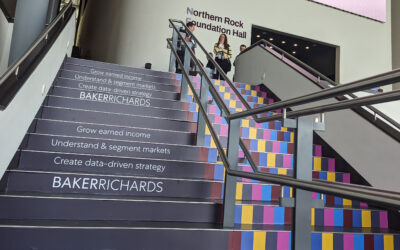Baker Richards > Insights > Analysis, research & strategy > Maintaining focus in the eye of the storm
Maintaining focus in the eye of the storm
April 14, 2020
Analysis, research & strategy, Comment, Segmentation & CRM
Categories
Tags
AAA of Income
Accessibility
Advantage Dashboard
Affiliation
Ancillary Sales
Audience Development
Behavioural Economics
Behavioural Segmentation
Business Planning
Conjoint Analysis
Consumer Psychology
Coronavirus
Discounting
Donations
Dynamic Pricing
Event Coding
Forecasting
Fundraising
Leadership
Marketing
Market Research
Membership
Modelling
Popular
Price Elasticity
Pricing
Pricing for digital
Primary Research
Repertoire Scoring
Resilience
Revenue Management
Revenue Management Application
Secret Seats
Segmentation
Segmentation Engine
Strategy
Subscription
Uplift
USA






Once the initial storm of Covid-19 closures and lockdown subsides, rapid and focused medium-term planning will be essential for the recovery of arts organisations. Here is a 5-step plan for getting on track.
The Chief Executive of a major cinema chain was quoted recently as saying “families, couples, individuals are being tied up at home for weeks or months now. When it is over there will be a demand to get out like we have never seen in history.”
This may not be wishful thinking. As Europe and the US enter the exponential growth phase of the coronavirus pandemic, there are tentative signs that China may be about to emerge from the worst of its social and economic lockdown.
Banks and governments are forecasting a ‘V’ shaped recession– a very sharp dip, followed by an initial, equally steep, short-term economic expansion. Even in the darkest times, it is important to plan ahead to maximise the benefit from a potential short-term boom, and for how you can convert that into prolonged, sustainable growth.
The following 5 steps will help to put you on the right track:
1. Build your plans on research
The natural and necessary reaction of many to the events of recent weeks has been to cut non-essential expenditure. You may now be wondering on what basis you could begin to invest again and how you will direct any available spend to achieve the greatest possible return for the lowest possible risk.
Undertaking original primary research to test the confidence level of your customer base will help you to decide how much you commit to marketing, when, with what objectives, and targeted to whom.
There is no need to second-guess what your audience is thinking, but before conducting your own research, try some online training in the essentials of effective survey design to make sure you gather meaningful data and insights – or seek external advice.
Organisations are often concerned with their competitive position in the market, or how big a slice of the audience ‘pie’ they can secure, but now is the time to consider collaborating with other organisations to pool resources to achieve a broader understanding of your shared audiences. Partnership working will be a vital response to the Coronavirus Pandemic, particularly when it comes to research and marketing. Leverage the combined data, PR and marketing power available to you.
2. Take a holistic, integrated look at your earned income opportunities
An integrated approach to earned income is based on the inter-relationship between the three key areas of income generated from arts consumers: Admissions (ticket sales); Affiliation (a catch-all for lower level donations and membership, but also subscription and other loyalty programmes); and Ancillary sales (food and beverage, as well as retail, merchandise, etc.). At Baker Richards we call this AAA.
Being grounded in this integrated, cross-organisational approach is a vital first step in ensuring you pull together to maximise the opportunities for earned income which will exist in the future. There is a real risk of a disjointed response, particularly in larger organisations.
In the coming weeks, we will make more AAA resources available on the Baker Richards website.
3. Identify the potential in your unsold inventory
Right now, widely shared modelling from Imperial College London suggests it could be prudent to forecast that European venues will be closed for the whole of the first quarter of 2020/21.
Assuming that entire quarter is lost, if your attendance target for the year was 75% of capacity you potentially still have three quarters to hit your target! That’s an extremely tall order, but it illustrates the importance of thinking clearly about making the most of your unsold inventory.
First of all, let’s take stock of what you’ve got to sell, including for many theatres and concert halls the shows that are still currently on sale. Beyond simply working out unsold capacity on a performance by performance basis do you know how many seats in the auditorium are available at each price, in each zone, on each day of the week, at what time, and for what type of show? These are the characteristics which define the different prices you can charge in order to maximize the overall value of sales, and which can be adjusted to optimize volume.
This is not so much dynamic pricing (though that may be useful), as pricing dynamically. That means standing ready to re-zone, recognising that different inventory can be targeted to different customer segments, and adjusting prices down (through strategic discounting) to drive volume as well as up to drive yield. Have you segmented your habitual weekday-bookers for example, or the people who always buy in certain price zones?
The possibilities can seem limitless, and therefore confusing. Our preferred approach is to distil potential outcomes down in to a clear, pre-planned pricing ‘playbook’ with defined triggers and actions. We will be publishing more about this approach on the Baker Richards website in the coming weeks.
4. Maximise confidence and conversion through segmentation
In the short term, many organisations which usually charge for admission are making art available free of charge online. This is a laudable, global effort to keep people entertained and informed in their homes in a time of great change.
Ultimately there will be a rebalancing, and when the time comes to revert to more regular business models, your marketing resources may be depleted in terms of experience, budgets, and data. You will need to target your efforts for maximum gain, and segmentation will be essential.
If you don’t have a sophisticated segmentation system, then the fundamentals of behavioural segmentation become even more vital. RFV or RFM – Recency, Frequency, and (Monetary) Value are universal criteria by which you can segment any paid-for, ticketed audience.
Your loyal ‘core’ audience should not require quite as much effort to win back as other segments, so where else do you concentrate your firepower? Look out for ‘infrequent loyalists’ – customers who attend relatively infrequently but have come back many times across several years. The likelihood is they see themselves as regular attenders, loyal to your organisation.
Another segment to target is those who attended more than once within a year, but only did so in one year (or maybe two). These ‘new converts’ could be as important to you as your longstanding core audience. We go into this in greater depth on the Baker Richards website, and you can find a case study on ArtsProfessional.
It will also be crucial to identify and segment your audience based on their behaviour during the period of closure. Who donated their tickets rather than asking for a refund? Who made an additional donation during the shutdown? Who purchased tickets for shows far into the future? And who engaged online or with emails?
Recognising the loyalty of customers who have shown support while being unable to visit should be a part of your marketing efforts. Organisations could consider rewarding donors who are supporting you at this time, by enrolling them in a membership scheme. This may be your existing programme, or you could create (for example) a six-month membership covering your next on-sale, when you will undoubtedly be keen to encourage advance booking.
5. Target discounts with care
In the early months of your ‘reboot’, volume will be key to drive both cashflow and word of mouth, though the ability to drive volume will of course be heavily influenced by any ongoing rules regarding social distancing.
There is no doubt that discounting will be a valuable tactic, and it will be tempting to adopt an indiscriminate, untargeted approach. Be wary of this, as it may prove a difficult habit to break. My colleague David Reece has written previously about the good, bad and ugly of discounting.
Instead, once you have identified your target segments, consider the tactics which will most incentivise these highly valuable customers to return, helping you to drive the re-emergence of consumer confidence – multi-buy offers across a season, or single-genre subscription packages targeted at your highest frequency customers, or those customers who have stood by you during these months, will be invaluable.
After a storm, comes the sun
In recent days I have spoken to a number of leaders across the arts who have found that after the storm of shutting down their organisations, furloughing staff, and switching on a ghost light, their inbox is becoming eerily quiet.
If this is you, then these five steps are the essential foundation for your earned income planning. Over the next few weeks we will be publishing more strategic and tactical responses to the business interruption caused by COVID-19 on the Baker Richards website. We wish you well.
First published by Arts Professional, 2 April 2020, artsprofessional.co.uk